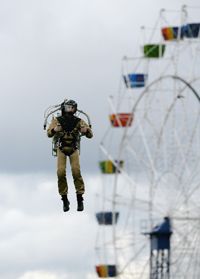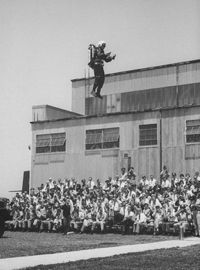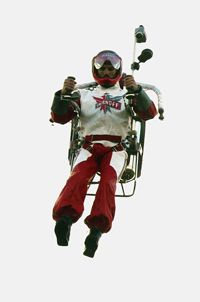The future is going to be pretty awesome. Each one of us will have our own personal jet pack. Instead of a long, slow daily commute, we'll zip straight to work at 100 mph, skimming along the tree tops. Family vacations will include jet pack trips to scenic locations unmarred by roads. Workers will use jet packs to complete work in high places, such as inspecting bridge supports or even cleaning skyscraper windows.
Wait … weren't we saying this about the future more than 50 years ago? Why has development of the jet pack been so slow? For many, this has been one of life's major disappointments. From the first promising flight tests in the 1940s, jet pack technology has hardly advanced at all. In fact, over the decades, jet packs have simply been unable to overcome some very fundamental problems. But it hasn't been all bad news. Along the way, jet packs have benefitted from several technological advancements, and they've even made a few high-profile appearances in the popular media.
Advertisement
With that said, is there any way that the average person will be able to get their hands on a real jet pack? Is it practical? Is it affordable? The military doesn't use them and most private citizens certainly don't have them, so the question for many of us still remains "Where are our jet packs?" Keep reading to find out.
Advertisement






